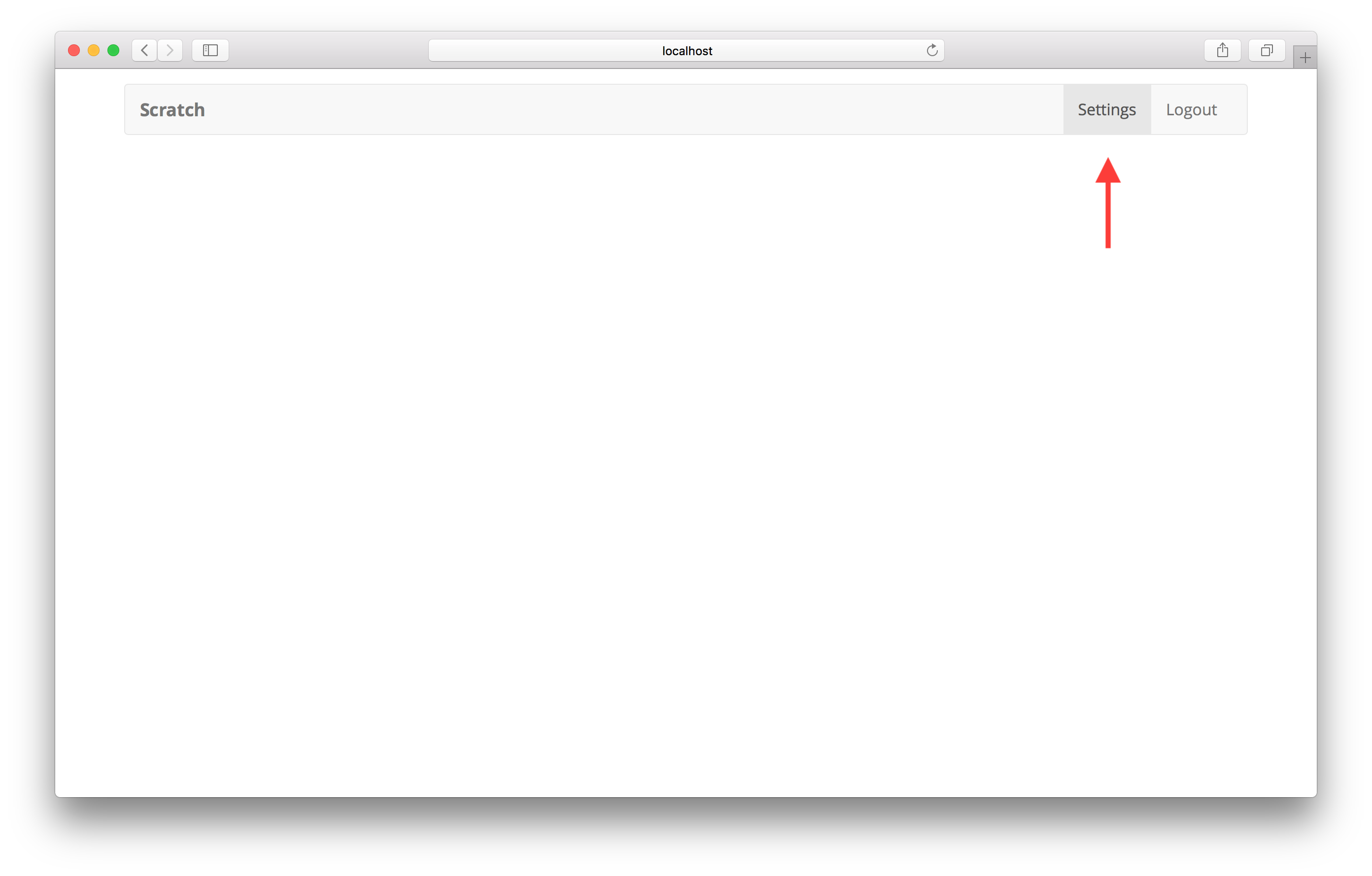Create a Settings Page
We are going to add a settings page to our app. This is going to allow users to pay for our service. The flow will look something like this:
- Users put in their credit card info and the number of notes they want to store.
- We call Stripe on the frontend to generate a token for the credit card.
- We then call our billing API with the token and the number of notes.
- Our billing API calculates the amount and bills the card!
To get started let’s add our settings page.
 Create a new file in
Create a new file in src/containers/Settings.js and add the following.
import React, { Component } from "react";
import { API } from "aws-amplify";
export default class Settings extends Component {
constructor(props) {
super(props);
this.state = {
isLoading: false
};
}
billUser(details) {
return API.post("notes", "/billing", {
body: details
});
}
render() {
return (
<div className="Settings">
</div>
);
}
}
 Next import this component in the header of
Next import this component in the header of src/Routes.js.
import Settings from "./containers/Settings";
 And replace our
And replace our <Switch> block in src/Routes.js with this.
<Switch>
<AppliedRoute path="/" exact component={Home} props={childProps} />
<UnauthenticatedRoute path="/login" exact component={Login} props={childProps} />
<UnauthenticatedRoute path="/signup" exact component={Signup} props={childProps} />
<AuthenticatedRoute path="/settings" exact component={Settings} props={childProps} />
<AuthenticatedRoute path="/notes/new" exact component={NewNote} props={childProps} />
<AuthenticatedRoute path="/notes/:id" exact component={Notes} props={childProps} />
{ /* Finally, catch all unmatched routes */ }
<Route component={NotFound} />
</Switch>
Notice that we added a route for our new settings page.
 Next add a link to our settings page in the navbar by replacing the
Next add a link to our settings page in the navbar by replacing the render method in src/App.js with this.
render() {
const childProps = {
isAuthenticated: this.state.isAuthenticated,
userHasAuthenticated: this.userHasAuthenticated
};
return (
!this.state.isAuthenticating &&
<div className="App container">
<Navbar fluid collapseOnSelect>
<Navbar.Header>
<Navbar.Brand>
<Link to="/">Scratch</Link>
</Navbar.Brand>
<Navbar.Toggle />
</Navbar.Header>
<Navbar.Collapse>
<Nav pullRight>
{this.state.isAuthenticated
? <Fragment>
<LinkContainer to="/settings">
<NavItem>Settings</NavItem>
</LinkContainer>
<NavItem onClick={this.handleLogout}>Logout</NavItem>
</Fragment>
: <Fragment>
<LinkContainer to="/signup">
<NavItem>Signup</NavItem>
</LinkContainer>
<LinkContainer to="/login">
<NavItem>Login</NavItem>
</LinkContainer>
</Fragment>
}
</Nav>
</Navbar.Collapse>
</Navbar>
<Routes childProps={childProps} />
</div>
);
}
You’ll notice that we added another link in the navbar for the case a user is logged in.
Now if you head over to your app, you’ll see a new Settings link at the top. Of course, the page is pretty empty right now.

Commit the Changes
 Let’s quickly commit these to Git.
Let’s quickly commit these to Git.
$ git add .
$ git commit -m "Adding settings page"
Next, we’ll add our Stripe SDK keys to our config.
If you liked this post, please subscribe to our newsletter, give us a star on GitHub, and follow us on Twitter.
For help and discussion
Comments on this chapter